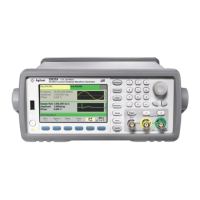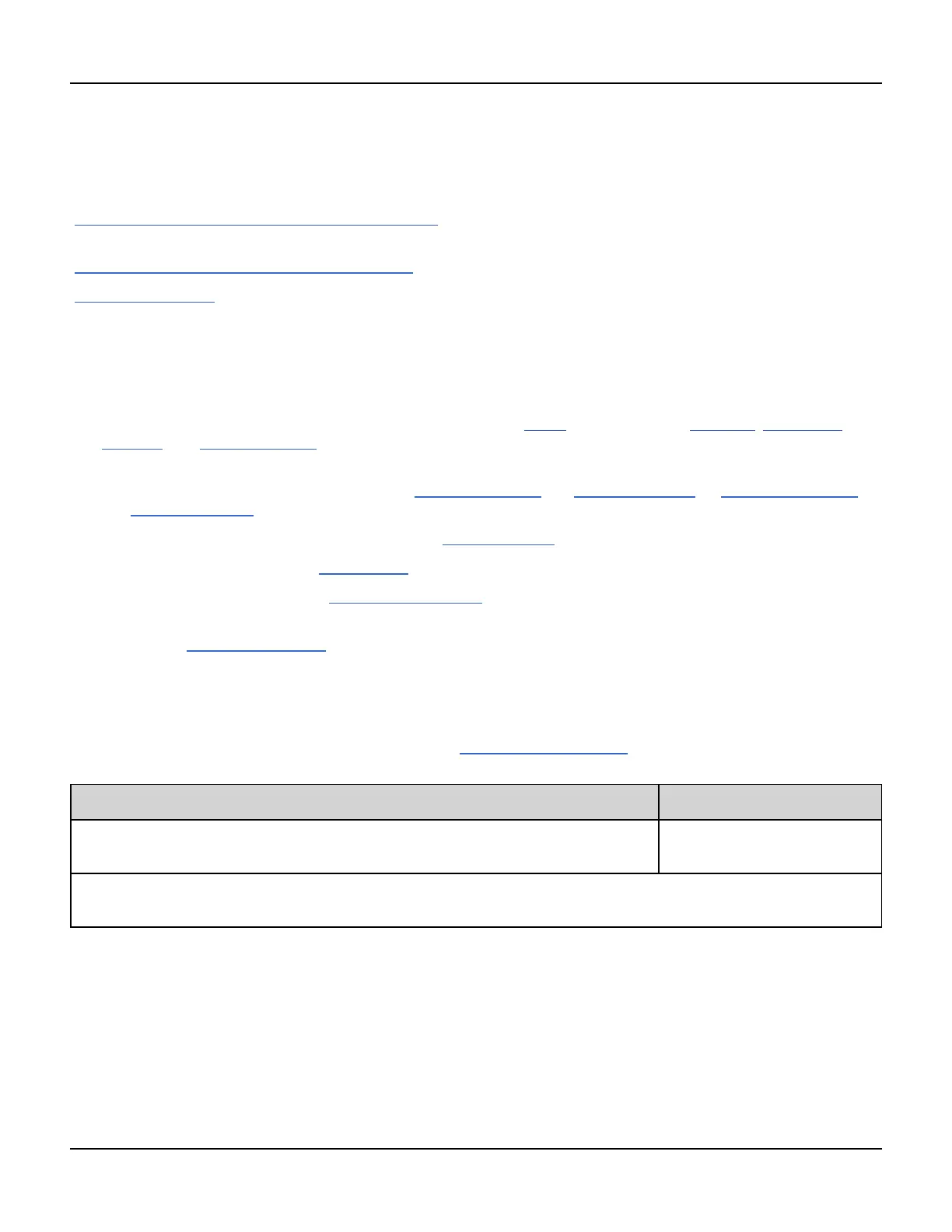FREQuency Subsystem
FREQuency Subsystem
The FREQuency subsystem sets the instrument's output frequency. In two-channel instruments, the channels'
frequencies may be coupled in various ways.
FREQuency:COUPle[:STATe] {ON|OFF|ONCE} enables or disables coupling, or using the ONCE, one channel's is
copied to the other, but not coupled to it.
FREQuency:COUPle:MODE {OFFSet|RATio} specifies the frequency coupling mode.
FREQuency:MODE allows you to specify a frequency mode to use, including a sweep, frequency list, or fixed
frequency.
Example
The remaining FREQuency commands are used to generate a sweep, as summarized below:
1. Select the waveform shape, amplitude and offset: Use APPLy or the equivalent FUNCtion, FREQuency,
VOLTage, and VOLTage:OFFSet commands to select the function, frequency, amplitude, and offset. You can select
a sine, square, or ramp (pulse, noise, arbitrary waveform, and DC are not allowed).
2. Set frequency boundaries of the sweep:FREQuency:STARt and FREQuency:STOP, or FREQuency:CENTer
and FREQuency:SPAN.
3. Select sweep mode (linear or logarithmic): SWEep:SPACing
4. Set sweep time in seconds: SWEep:TIME
5. Select sweep trigger source: TRIGger[1|2]:SOURce
6. Set frequency at which signal on front-panel Sync connector goes low during sweep
(optional):MARKer:FREQuency
[SOURce[1|2]:]FREQuency {<frequency>|MINimum|MAXimum}
[SOURce[1|2]:]FREQuency? [{MINimum|MAXimum}]
Sets the output frequency. This command is paired with FUNCtion:PULSe:PERiod; whichever one is executed last over-
rides the other.
Parameter Typical Return
1 μHz to maximum instrument frequency, except for triangle and ramp, which are
limited to 200 kHz. Default 1 kHz
+1.000000000000000E+03
Set output frequency to 60 Hz:
FREQ 60
l Function Limitations: The frequency limits are function dependent, as shown in the above table. If you send a com-
mand specifying a frequency that is not in the appropriate range for the current function, an error will occur. For
example, if the current function is "ramp" and you send the command FREQ 20 MHz, a "Data out of range" error is
generated and the frequency is set to 200 kHz, which is the maximum for a ramp waveform.
[SOURce[1|2]:]FREQuency:CENTer {<frequency>|MINimum|MAXimum}
[SOURce[1|2]:]FREQuency:CENTer? [{MINimum|MAXimum}]
Sets the center frequency. Used with frequency span for a frequency sweep.
202 Agilent 33500 Series Operating and Service Guide

